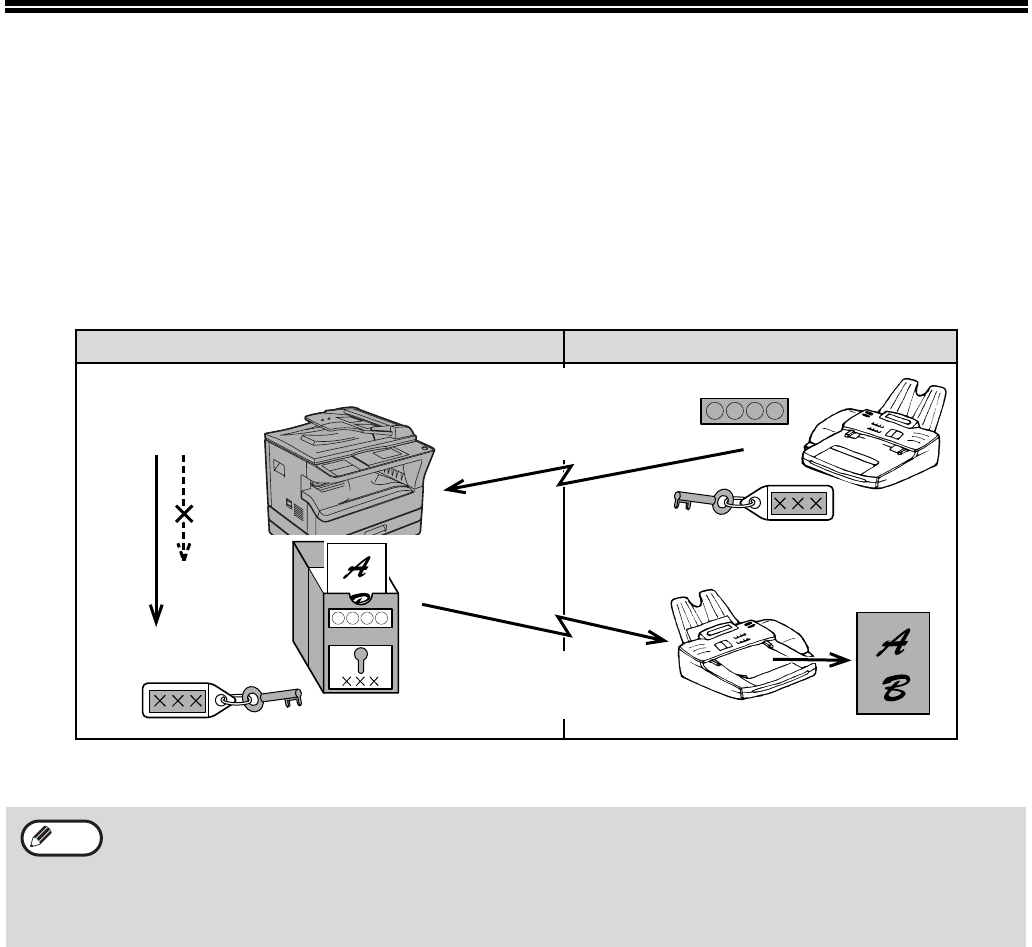
54
F-CODE POLLING MEMORY
F-code polling memory allows one fax machine to call another fax machine and initiate reception of a document that
has been scanned into the other machine's F-code polling memory box. Calling another machine and initiating
reception is called F-code polling, and scanning a document into a memory box for another machine to retrieve by
polling is called F-code polling memory. This function is approximately the same as regular polling (page 35);
however, it uses an F-code polling memory box and is always protected by means of the sub-address and
passcode.
HOW F-CODE POLLING MEMORY WORKS
F-code polling (page 57) is when your machine calls another machine and retrieves a document that was scanned
into the polling memory box of that machine (the reverse of the above diagram).
• To perform polling or polling memory transmission without using an F-code, see page 35.
• To create an F-code polling memory box, see "PROGRAMMING F-CODE PUBLIC (POLLING MEMORY)
BOXES" (page 81) and "Scanning a document into polling memory (the Public Box)" (page 38).
• Unlike regular polling, the other machine's fax number is not used as a passcode for F-code polling memory.
The sub-address and passcode of the polling memory box are always used for polling security.
• The receiving machine bears the expense (phone charges) of the transmission.
3) Polling memory
box opens
1) F-code polling
(transmission request)
Sub-address and passcode
are transmitted to your machine
4) Automatic transmission
of document data
to other machine
2) Check sub-address
and passcode
Your machine The other machine
Product Planning
Subaddress
Passcode
Match
Do not match
Note


















